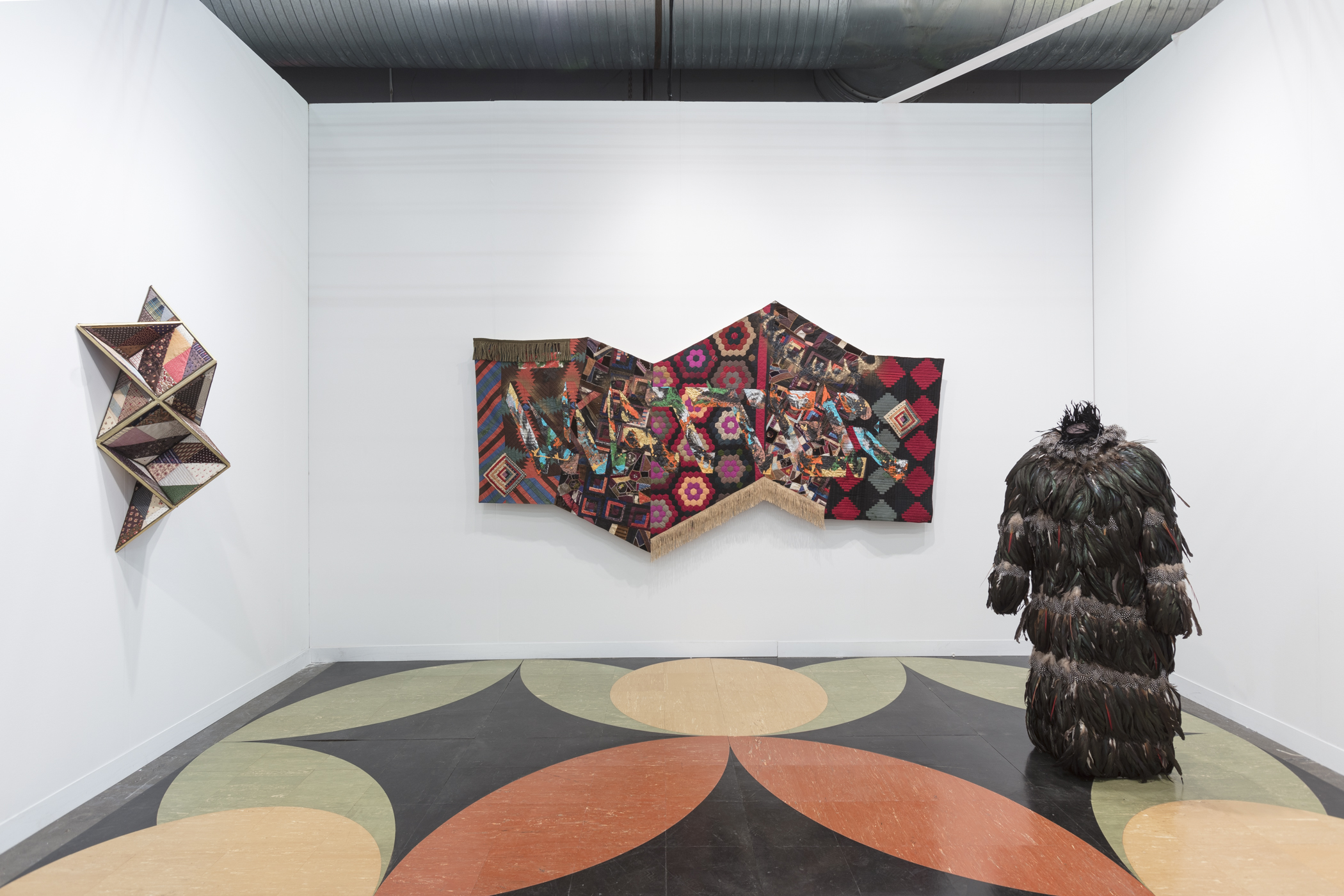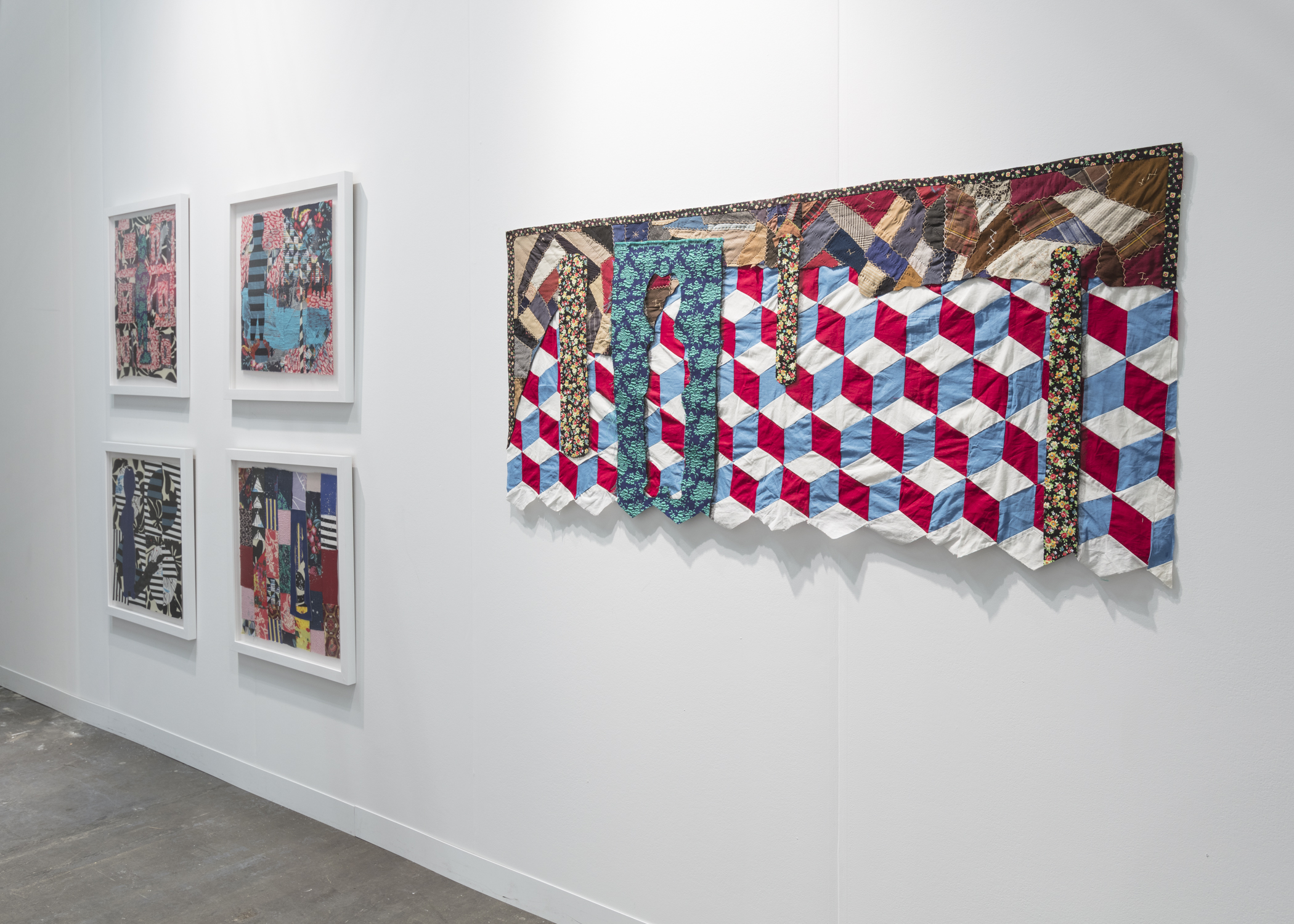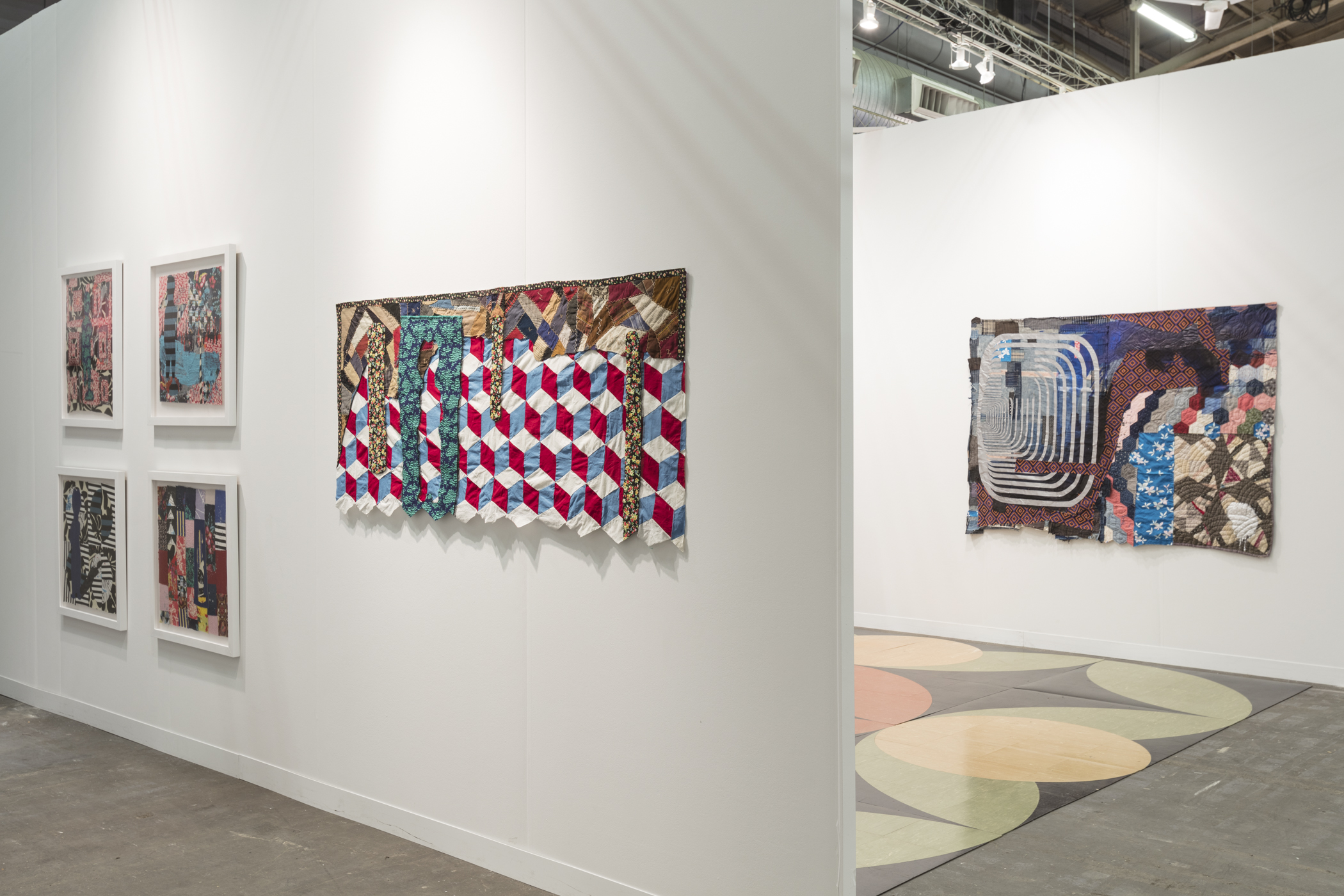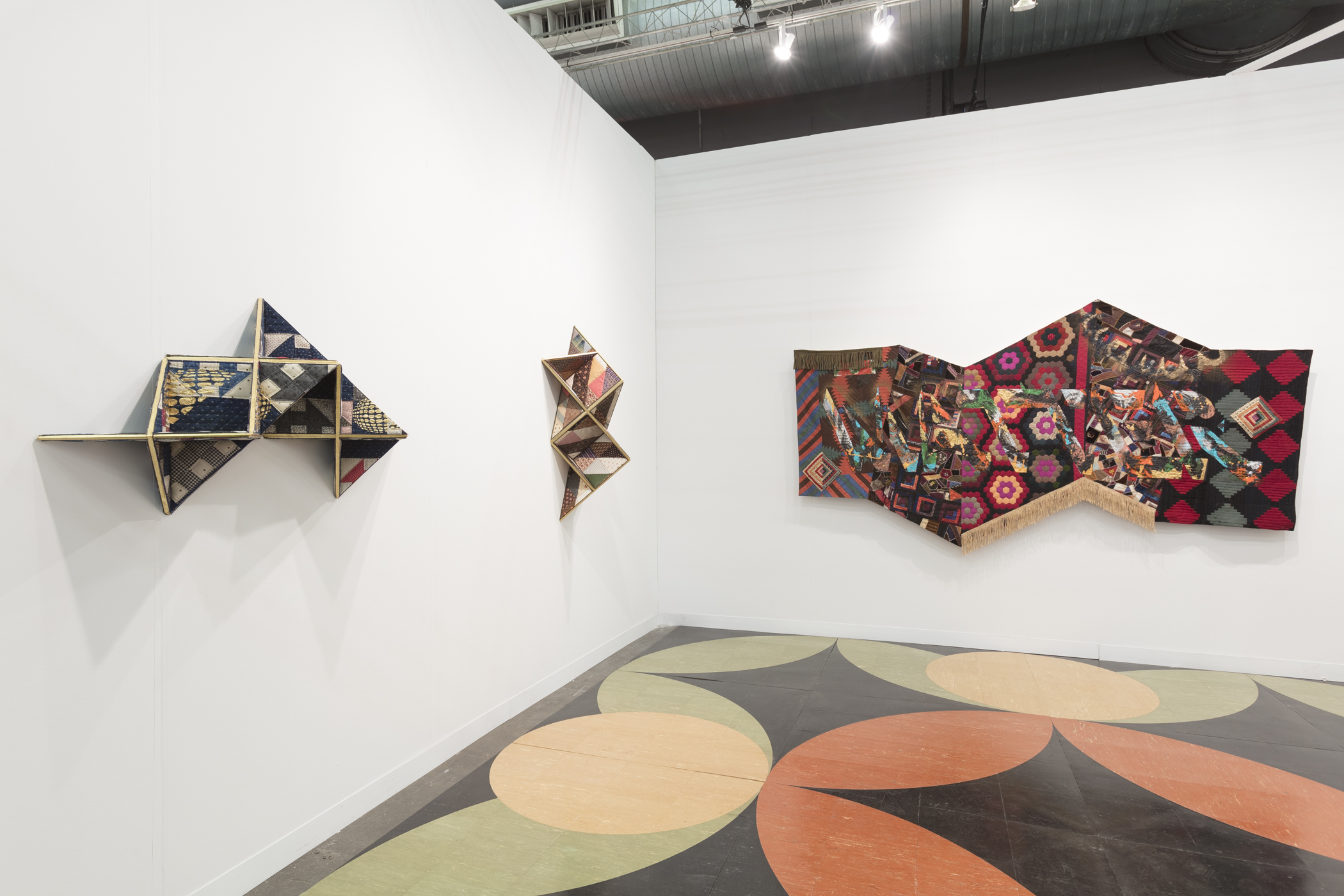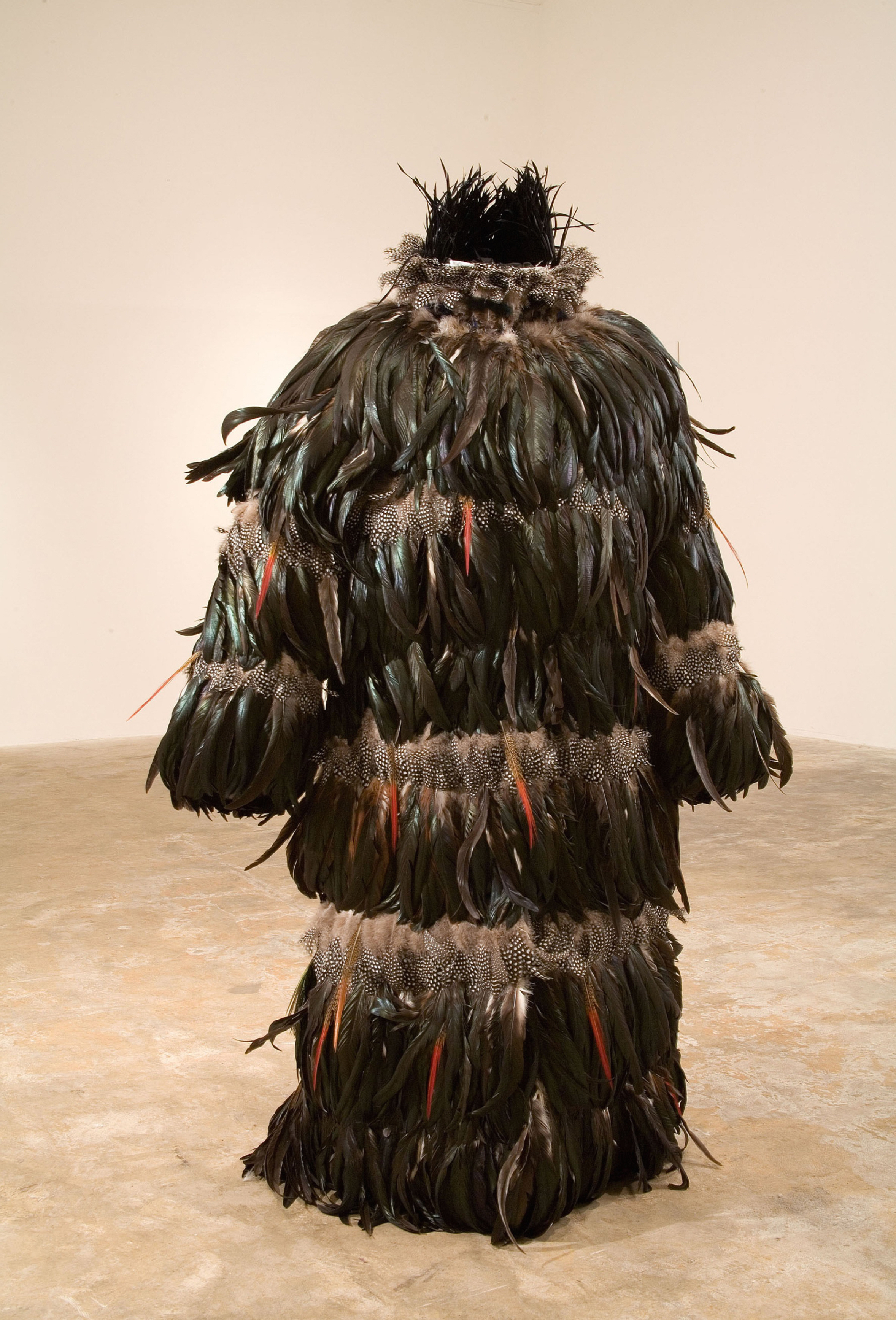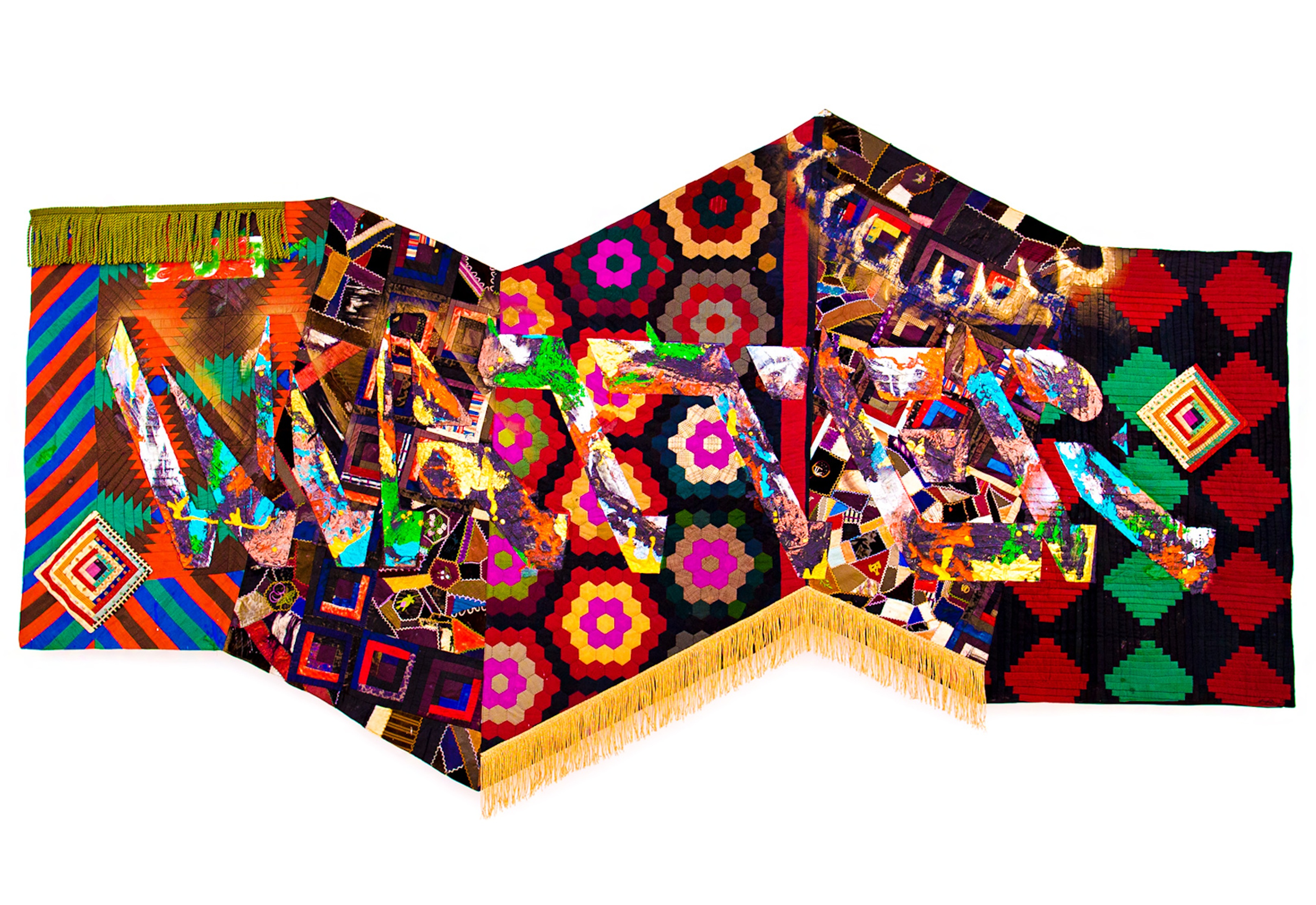The Armory Show
March 8 – March 11, 2018
For exhibition at the 2018 Armory Show, David Castillo Gallery presents a solo booth of works by gallery-represented artist Sanford Biggers. Spanning the last twenty years of his career, the proposed works bridge the diversity of Biggers’ practice in painting, textile, sculpture, paper and costume design.
Over the past two decades, Biggers has come to prominence through a body of work that examines the history of slavery in the United States and its fallout today, seen across investigations of race, identity, African American history, Afro-futurism and syncretic spiritual practices from Buddhism to indigenous traditions. Recently, the artist was named one of the winners of the 2017-18 Rome Prize, where he will hold a two-year residency at the American Academy in Rome. The relevance of his artistic practice in light of the United States’ current cultural climate, and his ascendancy within the art world with recent prestigious solo exhibitions, residencies and appointments, make this a timely moment to celebrate the body of work of an artist who will long be remembered as a key contributor to this moment in history.
Civil War-era quilts are a common grammar of Biggers’ practice at-large, where he uses them as canvases onto which he paints and collages a coded language of repeated symbols recalling the Abolitionist movement and its notable figures. On a research trip that took him along the locations of the Underground Railroad, Biggers learned that quilts were commonly used as signposts to signal safe houses for escaping slaves. Works such as Sakura (2014) are imbued with forms like constellation patterns or root systems which recall landmarks used for navigation by figures such as Harriet Tubman. The mouth is, as well, a repeating motif of this body of work, where a wide, red-lipped grin signals Vaudeville, blackface and minstrel shows that emerged from the legacy of slavery. The most recent quilt piece proposed for the booth is MATTER (2015), a 10-foot wide piece sewn from several antique quilts, which draws a direct connection to the Black Lives Matter movement and positions their activism within the long history of the black experience in America. The quilts serve as trans-historical markers, connecting then and now within the sensibilities of Biggers’ distinct visual language.
Biggers’ Mandala of the B-Bodhisattva II (2000), a large-scale mandala and dance floor, conflates breakdance with Buddhist meditation; this work will line the floor of the booth. Exploring b-boy culture, Biggers’ Mandala offers a pattern of circular forms to rhyme with the fluid, spinning movements of breakdancing. Over the course of its life, the floor has served as a setting for myriad performances, both impromptu and not, and has featured at the Studio Museum in Harlem, Tate Modern, the Whitney Biennial, the Kitchen, and Performa 07, among other venues. With this work, Biggers re-envisions the history of hip hop as an integral component of African American history and human history at-large, playing metaphorically with the Buddhist belief that all life is interconnected.
The Ghetto Bird Tunic (2006), a wearable suit made from layered peacock feathers, will stand in the center of the booth. Made as part of Biggers’ Performa 07 commission The Somethin’ Suite, a vaudeville variety show that interrogated the history of race in America, the suit was additionally worn by the late Terry Adkins in a performance at the New Museum in 2009. Playing with the pun of the “ghetto bird”— a slang term used to describe police helicopters patrolling overhead in impoverished, high crime areas— Biggers draws out a more literal invocation of the term with feathered costuming that nods towards tribal ritual, Africa, and the origins of the trans-Atlantic slave trade.
Sanford Biggers’ multi-hyphenate artistic practice traverses and flattens history, drawing references from the last two centuries with little regard for time’s linearity. His socio-historical collaging of African American experience, past to present, bridges the violence of this history and activist struggles. His work is a critical reflection of the times it draws upon and those it currently lives within. And now, in its most urgent iteration when read against America’s current political landscape, Biggers responds to the sweeping gravity of the present with nods towards the past repeating itself.



